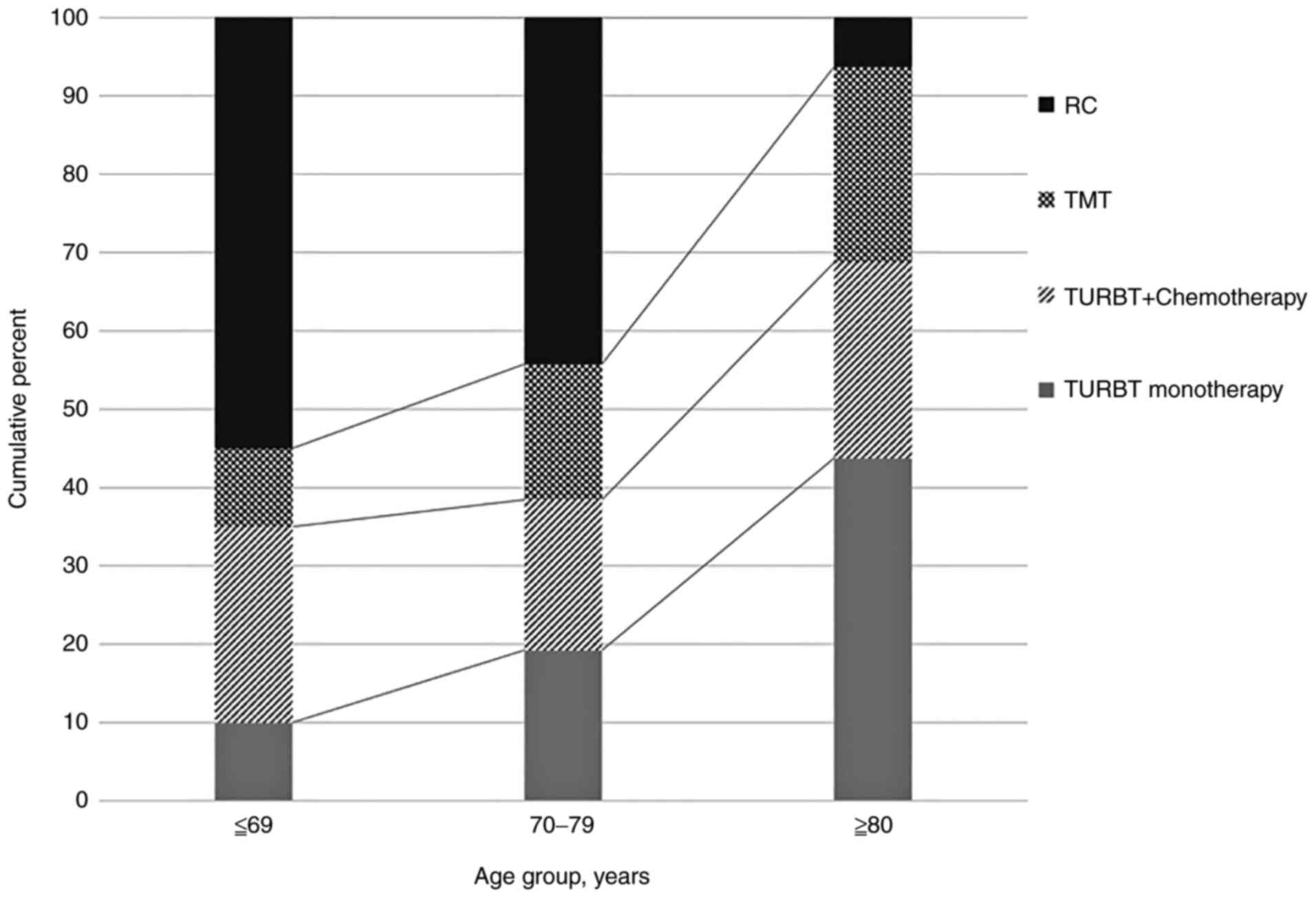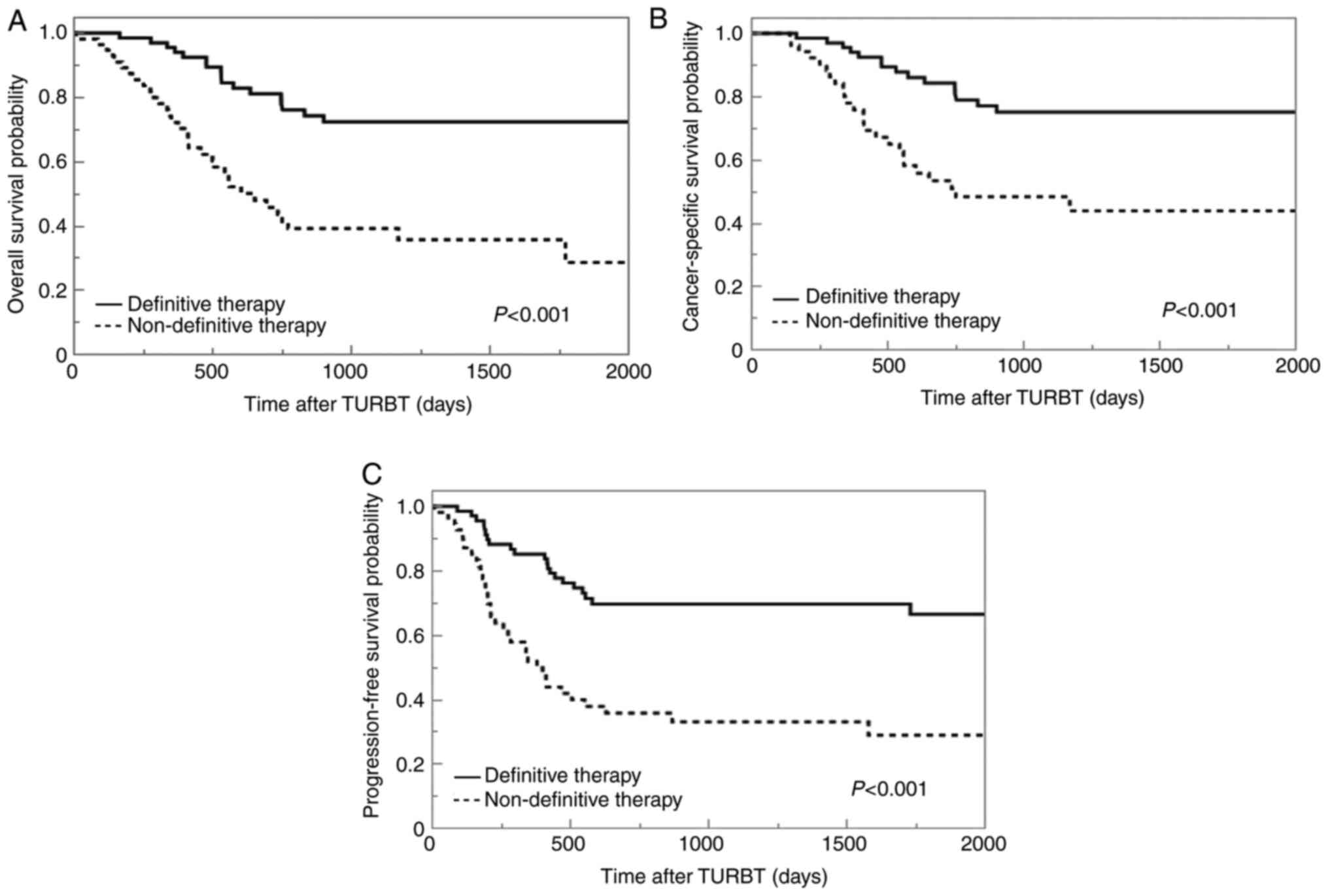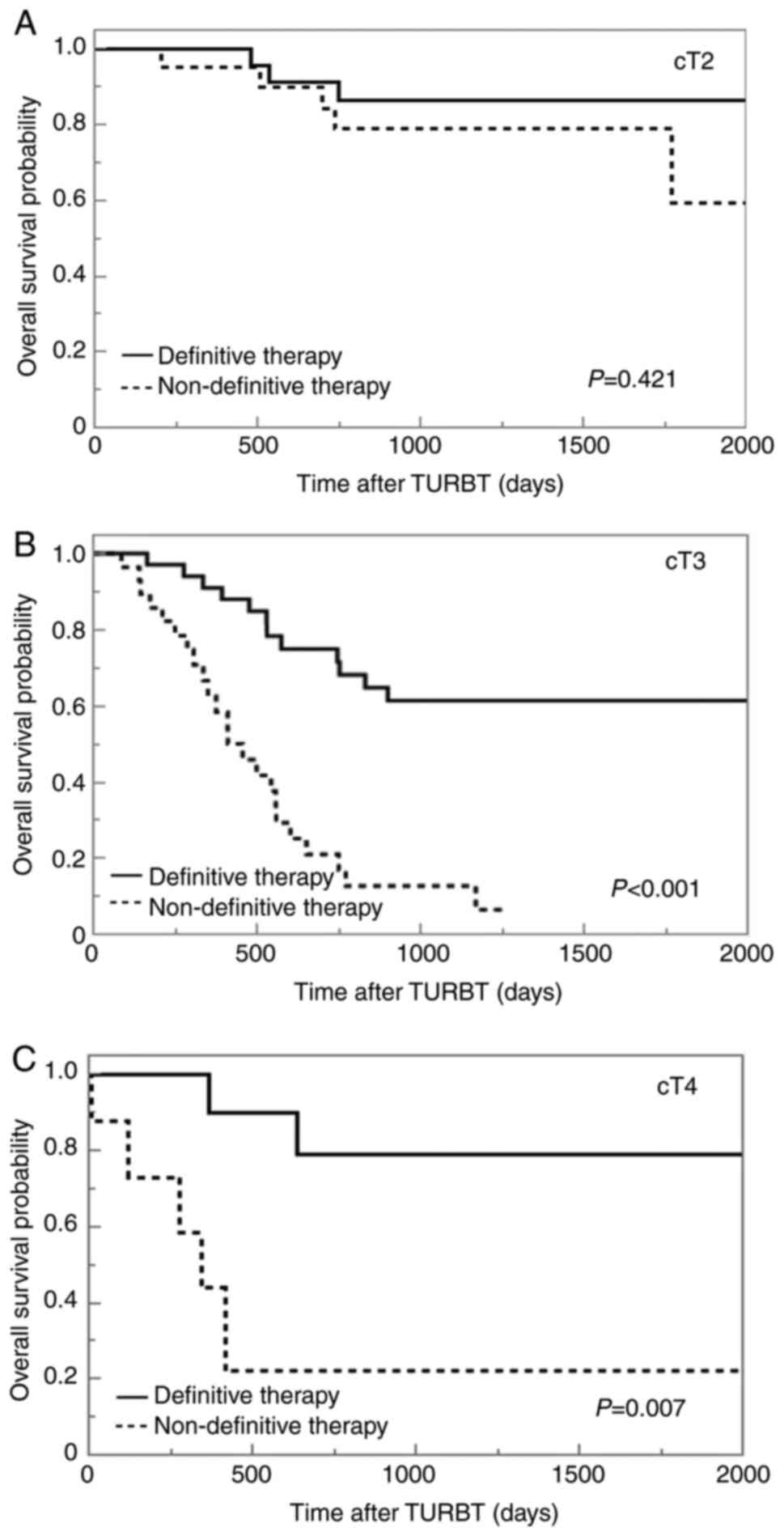|
1
|
No authors listed. Cancer Statistics in
Japan. Cancer information service, national cancer center; Japan:
(Vital Statistics of Japan, Ministry of Health, Labour and
Welfare). Available via DIALOG. https://ganjoho.jp/en/professional/statistics/table_download.htmlAugust
20–2021
|
|
2
|
Kamat AM, Hahn NM, Efstathiou JA, Lerner
SP, Malmström PU, Choi W, Guo CC, Lotan Y and Kassouf W: Bladder
cancer. Lancet. 388:2796–2810. 2016. View Article : Google Scholar : PubMed/NCBI
|
|
3
|
Witjes JA, Bruins HM, Cathomas R, Compérat
EM, Cowan NC, Gakis G, Hernández V, Linares Espinós E, Lorch A,
Neuzillet Y, et al: European association of urology guidelines on
muscle-invasive and metastatic bladder cancer: Summary of the 2020
guidelines. Eur Urol. 79:82–104. 2021. View Article : Google Scholar : PubMed/NCBI
|
|
4
|
No authors listed. NCCN Guidelines.
Bladder cancer. Available via DIALOG. https://www.nccn.org/guidelines/guidelines-detail?category=1&id=1417August
20–2021
|
|
5
|
Solsona E, Iborra I, Collado A,
Rubio-Briones J, Casanova J and Calatrava A: Feasibility of radical
transurethral resection as monotherapy for selected patients with
muscle invasive bladder cancer. J Urol. 184:475–480. 2010.
View Article : Google Scholar : PubMed/NCBI
|
|
6
|
Audenet F, Waingankar N, Ferket BS, Niglio
SA, Marqueen KE, Sfakianos JP and Galsky MD: Effectiveness of
transurethral resection plus systemic chemotherapy as definitive
treatment for muscle invasive bladder cancer in population level
data. J Urol. 200:996–1004. 2018. View Article : Google Scholar : PubMed/NCBI
|
|
7
|
Brierley JD, Gospodarowicz MK and
Wittekind C: UICC TNM classification of malignant tumours. 8th
edition. Wiley Blackwell; New Jersey, NY: 2016
|
|
8
|
Koie T, Ohyama C, Fujimoto H, Nishiyama H,
Miyazaki J, Hinotsu S, Kikuchi E, Sakura M, Inokuchi J, Hara T, et
al: Diversity in treatment modalities of Stage II/III urothelial
cancer in Japan: Sub-analysis of the multi-institutional national
database of the Japanese urological association. Jpn J Clin Oncol.
46:468–474. 2016. View Article : Google Scholar : PubMed/NCBI
|
|
9
|
Gray PJ, Fedewa SA, Shipley WU, Efstathiou
JA, Lin CC, Zietman AL and Virgo KS: Use of potentially curative
therapies for muscle-invasive bladder cancer in the United States:
results from the national cancer data base. Eur Urol. 63:823–829.
2013. View Article : Google Scholar : PubMed/NCBI
|
|
10
|
Herr HW: Transurethral resection of
muscle-invasive bladder cancer: 10-Year outcome. J Clin Oncol.
19:89–93. 2001. View Article : Google Scholar : PubMed/NCBI
|
|
11
|
Seisen T, Sun M, Lipsitz SR, Abdollah F,
Leow JJ, Menon M, Preston MA, Harshman LC, Kibel AS, Nguyen PL, et
al: Comparative effectiveness of trimodal therapy versus radical
cystectomy for localized muscle-invasive urothelial carcinoma of
the bladder. Eur Urol. 72:483–487. 2017. View Article : Google Scholar : PubMed/NCBI
|
|
12
|
Fahmy O, Khairul-Asri MG, Schubert T,
Renninger M, Malek R, Kübler H, Stenzl A and Gakis G: A systematic
review and meta-analysis on the oncological long-term outcomes
after trimodality therapy and radical cystectomy with or without
neoadjuvant chemotherapy for muscle-invasive bladder cancer. Urol
Oncol. 36:43–53. 2018. View Article : Google Scholar : PubMed/NCBI
|
|
13
|
Mak KS, Smith AB, Eidelman A, Clayman R,
Niemierko A, Cheng JS, Matthews J, Drumm MR, Nielsen ME, Feldman
AS, et al: Quality of life in long-term survivors of
muscle-invasive bladder cancer. Int J Radiat Oncol Biol Phys.
96:1028–1036. 2016. View Article : Google Scholar : PubMed/NCBI
|
|
14
|
Smith AB, Jaeger B, Pinheiro LC, Edwards
LJ, Tan HJ, Nielsen ME and Reeve BB: Impact of bladder cancer on
health-related quality of life. BJU Int. 121:549–557. 2018.
View Article : Google Scholar : PubMed/NCBI
|
|
15
|
Cerruto MA, D'Elia C, Siracusano S,
Gedeshi X, Mariotto A, Iafrate M, Niero M, Lonardi C, Bassi P,
Belgrano E, et al: Systematic review and meta-analysis of non RCT's
on health related quality of life after radical cystectomy using
validated questionnaires: Better results with orthotopic neobladder
versus ileal conduit. Eur J Surg Oncol. 42:343–360. 2016.
View Article : Google Scholar : PubMed/NCBI
|
|
16
|
Clifford TG, Shah SH, Bazargani ST,
Miranda G, Cai J, Wayne K, Djaladat H, Schuckman AK and Daneshmand
S: Prospective evaluation of continence following radical
cystectomy and orthotopic urinary diversion using a validated
questionnaire. J Urol. 196:1685–1691. 2016. View Article : Google Scholar : PubMed/NCBI
|
|
17
|
Maffezzini M, Fontana V, Pacchetti A,
Dotta F, Cerasuolo M, Chiappori D, Guano G, Mantica G and Terrone
C: Age above 70 years and charlson comorbidity index higher than 3
are associated with reduced survival probabilities after radical
cystectomy for bladder cancer. Data from a contemporary series of
334 consecutive patients. Arch Ital Urol Androl. 93:15–20. 2021.
View Article : Google Scholar : PubMed/NCBI
|

















